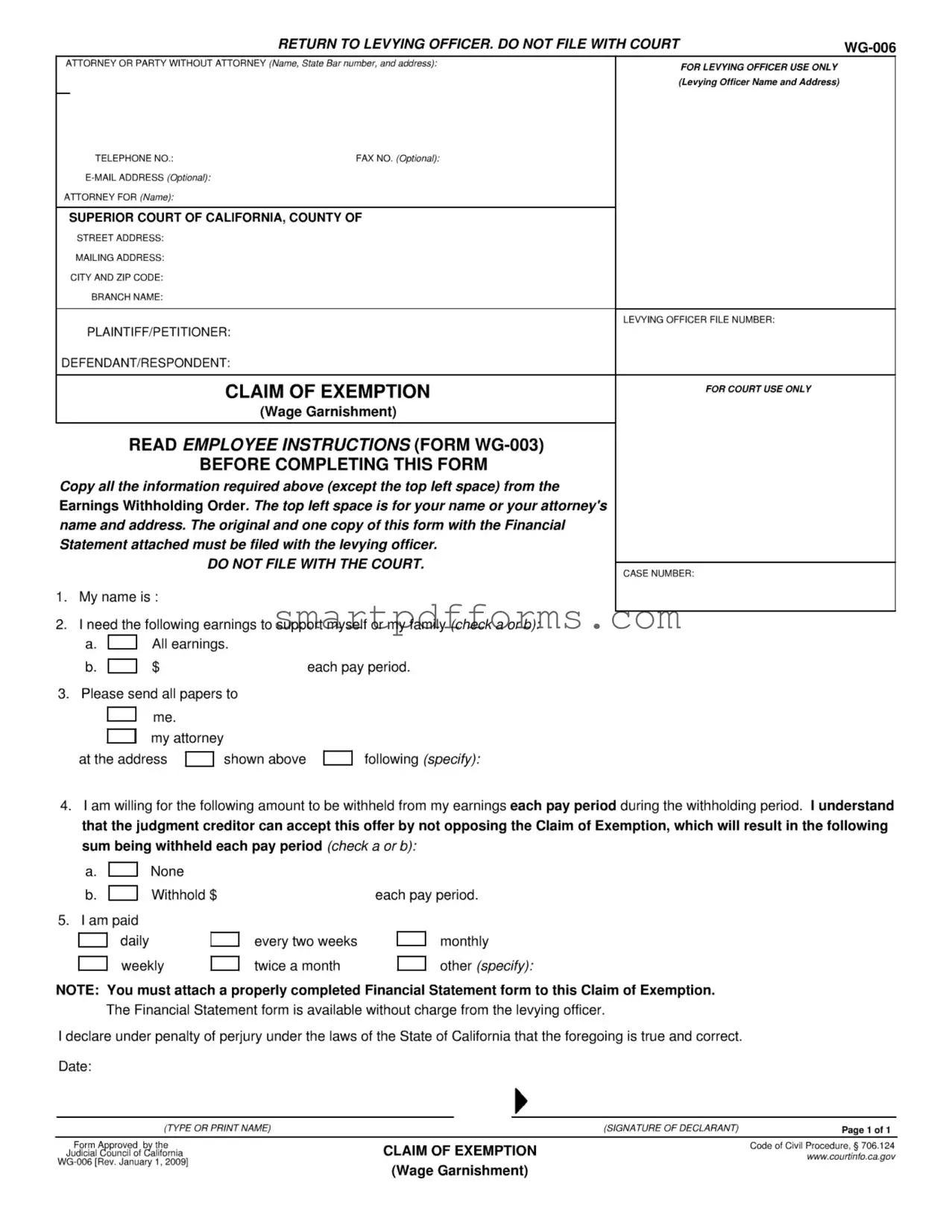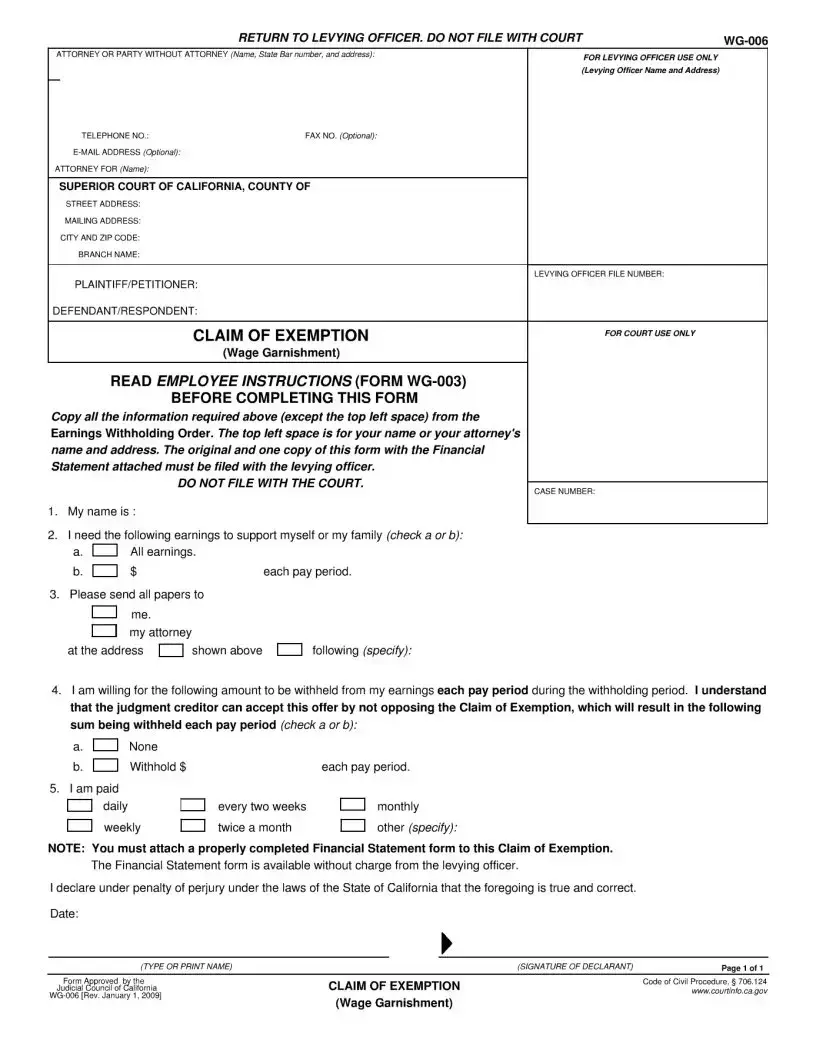Blank Claim Of Exemption Wg 006 PDF Template
The Claim of Exemption (WG-006) form is a critical document for individuals facing wage garnishment in California, allowing them to declare a portion of their earnings as necessary for their own or their family's support, thereby exempting it from being withheld. It is designed to be filed with the levying officer, not with the court, and requires a detailed financial statement to be attached. To protect one's earnings and ensure a fair consideration, it's imperative to fill out and submit this form correctly.
For assistance with filling out the Claim of Exemption form or to learn more about safeguarding your income, click the button below.
Make This Document Now

